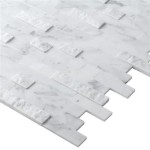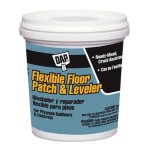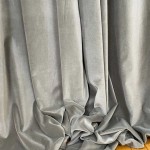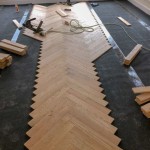How Much Does It Cost To Install Engineered Hardwood Floors?
Engineered hardwood flooring presents a popular alternative to solid hardwood, offering a blend of aesthetics, durability, and ease of installation. Understanding the costs associated with installing this type of flooring is crucial for homeowners planning renovations or new construction. The total expense is influenced by several factors, from the type of engineered wood selected to the complexity of the installation process. This article provides a detailed breakdown of the various cost components involved in engineered hardwood floor installation.
The process of calculating the cost involves a multifaceted approach, considering not only the material itself but also the labor involved, any necessary subfloor preparation, and additional services like furniture removal or trim installation. Geographic location can also play a significant role, as labor rates and material costs can vary substantially across different regions. Therefore, a comprehensive assessment is necessary to accurately estimate the overall investment.
Material Costs: Engineered Hardwood Flooring Selection
The price of engineered hardwood flooring varies widely, primarily depending on the veneer thickness, wood species, plank dimensions, and finish quality. The veneer, which is the top layer of real hardwood, determines the aesthetic appeal and the potential for refinishing. Thicker veneers generally command a higher price but offer a longer lifespan and the ability to be sanded and refinished multiple times. Thinner veneers, while more affordable, may only allow for limited or no refinishing.
Wood species also impact the cost. Common options like oak and maple tend to be more budget-friendly, while exotic species such as Brazilian cherry or walnut can significantly increase the price per square foot. Plank width and length are other considerations. Wider and longer planks often create a more luxurious appearance but tend to be more expensive due to increased material usage and manufacturing complexity. Finally, the finish type and any special treatments applied to the flooring affect its overall price. For example, pre-finished floors with enhanced scratch resistance or UV protection typically cost more than unfinished options that require on-site finishing.
As a general range, expect to pay anywhere from $3 to $15 per square foot for the engineered hardwood material itself. Lower-end options, typically featuring thinner veneers and less expensive wood species, fall on the lower end of this spectrum. Premium choices, with thicker veneers, exotic woods, and specialized finishes, reside at the higher end. It's important to factor in an additional 5-10% for waste when ordering materials to account for cuts and imperfections.
Labor Costs: Professional Installation Services
Labor costs constitute a significant portion of the overall installation expense. These costs are influenced by the complexity of the job, the installer's experience, and the prevailing labor rates in the area. Several factors contribute to the complexity, including the size and shape of the room, the presence of obstacles like stairs or built-in cabinets, and the chosen installation method.
Engineered hardwood can be installed using several methods: floating, glue-down, or nail-down. A floating installation, where the planks are interlocked and rest on an underlayment without being directly attached to the subfloor, is generally the least expensive option. Glue-down installations, which involve adhering the planks directly to the subfloor with adhesive, tend to be more labor-intensive and therefore more costly. Nail-down installations, typically reserved for solid hardwood but sometimes used for engineered wood over a wooden subfloor, are also more complex and expensive.
Experience also matters. Seasoned installers often command higher rates due to their expertise and ability to handle challenging installations efficiently. However, it's crucial to balance cost with quality, as a poorly executed installation can lead to problems down the line, such as uneven floors, gaps between planks, or squeaking. Professional installation generally costs between $3 and $8 per square foot. This typically includes subfloor preparation, plank installation, and the installation of baseboards or other trim.
Subfloor Preparation Costs: Ensuring a Stable Foundation
Proper subfloor preparation is critical for a successful engineered hardwood flooring installation. An uneven, unstable, or contaminated subfloor can lead to flooring failures, regardless of the quality of the material or the skill of the installer. Therefore, it's often necessary to address any deficiencies in the subfloor before proceeding with the installation.
Common subfloor preparation tasks include leveling uneven areas, repairing cracks or damages, and cleaning the surface to remove debris and contaminants. Leveling can be achieved using self-leveling compounds or by grinding down high spots. Cracks and damages may require patching or even replacement of sections of the subfloor. Cleaning typically involves sweeping, vacuuming, and possibly using a specialized cleaning solution to ensure proper adhesion or flatness for the new flooring.
In some cases, it may be necessary to install a new subfloor altogether. This is often required if the existing subfloor is severely damaged, warped, or made of unsuitable material. Common subfloor materials include plywood and oriented strand board (OSB). The cost of subfloor preparation can range from $0.50 to $3 per square foot, depending on the extent of the work required. If a new subfloor needs to be installed, the cost can increase significantly, potentially adding several dollars per square foot to the overall project cost. A moisture barrier is also crucial, and these typically cost between $0.10 to $0.50 per square foot.
Other costs often go unnoticed or underestimated when planning for installation. For instance, removing existing flooring can add to the project expense. Fees for furniture removal and replacement and the disposal of waste are often not included in the initial estimate. Trimming is another area where costs can increase. Replacing or installing new floor trim can significantly add to the total. Also, if new tools are needed, this should be accounted for in the initial investment. These costs can vary widely, and it's advisable to obtain detailed quotes from multiple contractors to understand the full scope of the project. Thorough planning and transparent communication with contractors can help avoid unexpected expenses and ensure a smooth installation process.
Inspections can also affect pricing. Prior to installation, it may be necessary, or advisable, to have a professional inspect the site for potential problems such as moisture levels. These inspections can cost a few hundred dollars, but may prevent problems later on. Following the inspection, remediation of moisture problems or other issues can be expensive but are essential for a long lasting floor.
Finally, consider long term costs. While engineered hardwood is durable, it may require maintenance and repairs over time. It is also important to consider the potential resale value of the home once the new flooring is installed. High quality, professionally installed engineered hardwood can increase the value of the home, providing a return on investment.

How Much Does Hardwood Flooring Cost 2025

How Much Does Engineered Hardwood Flooring Cost 2025 Today S Homeowner

How Much Does It Cost To Install Engineered Hardwood Floors

Cost Of Laying Engineered Wood Flooring With Different Patterns Major

Flooring Installation Cost Guide 2025 Average Prices By Type

Cost To Install Hardwood Floors The Home

Cost Of Laying Engineered Wood Flooring With Different Patterns Major

How Much Does It Cost To Install Hardwood Flooring

How Much Does It Cost To Install Engineered Hardwood Flooring 2025 Guide Angi

How Much Does Flooring Installation Cost 2025







